Scandinavian design is a prominent design movement that has influenced everything from architecture and interior design to product design. The movement emerged in the early 20th century in the Nordic countries of Sweden, Denmark, Finland, Norway, and Iceland. During the 1950s, it became known around the world. Blending minimalism and functionality, Scandinavian design offers a considered solution for simple living.
The history of Scandinavian design is deeply connected to some of the world’s most revered architects and designers. Renowned figures that have helped usher in the golden age of Nordic design include Alvar Aalto, Olav Haug, Arne Jacobsen, Timo Tapani Sarpaneva, Poul Henningsen, Bruno Mathsson, Kaare Klint, and Borge Mogensen, among many others. Iconic designs from this era include the PH lamp series, the Egg Chair, the Spanish Chair, and the Finlandia glassware series, to name a few.
Today, Scandinavian design is one of the most popular movements in contemporary design. Many designs from the golden era are still used today. Good examples are Alvar Aalto’s stool designs that appear in Apple stores; the PH series from the Louis Poulsen collection; and the unmistakable Egg chair. New designs created by young Scandinavian designers pay homage to the legendary pioneers of the movement while offering fresh twists on the iconic Nordic style.
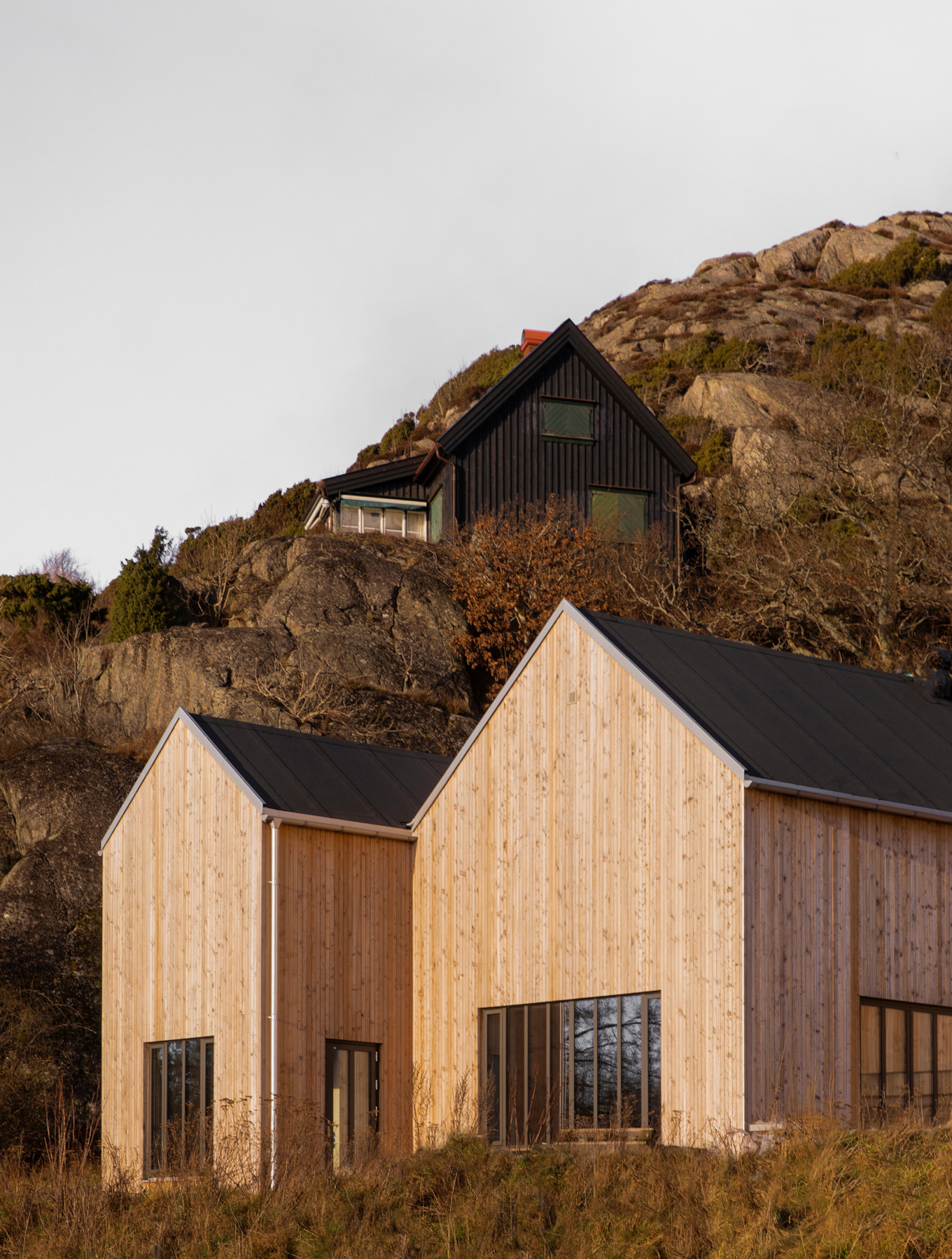
What are the elements of Scandinavian design?
The main elements of Scandinavian design are functionality, simplicity, and craftsmanship. A majority of Nordic style designs also favor natural materials, especially pale woods like ash and beech, wool and linen textiles, leather, and glass. While some items boast traditional patterns or brighter color accents, most Scandinavian style designs have an understated, minimalist appearance.
Here are the characteristics and main elements of Scandinavian design and architecture:
- Minimalist aesthetic
- Understated design that follows function
- Light, neutral colors
- Muted, dark hues that remind of Nordic landscapes
- Airy spaces filled with light
- Wood furniture and wood accents
- Decorative, statement pendant lights
- Multifunctional and flexible designs
- Plush sofas and tactile fabrics
- Hanging plants and lush greenery
- Natural textiles
- Steel, brass, or copper accents
- Artworks as focal points in a minimalist space
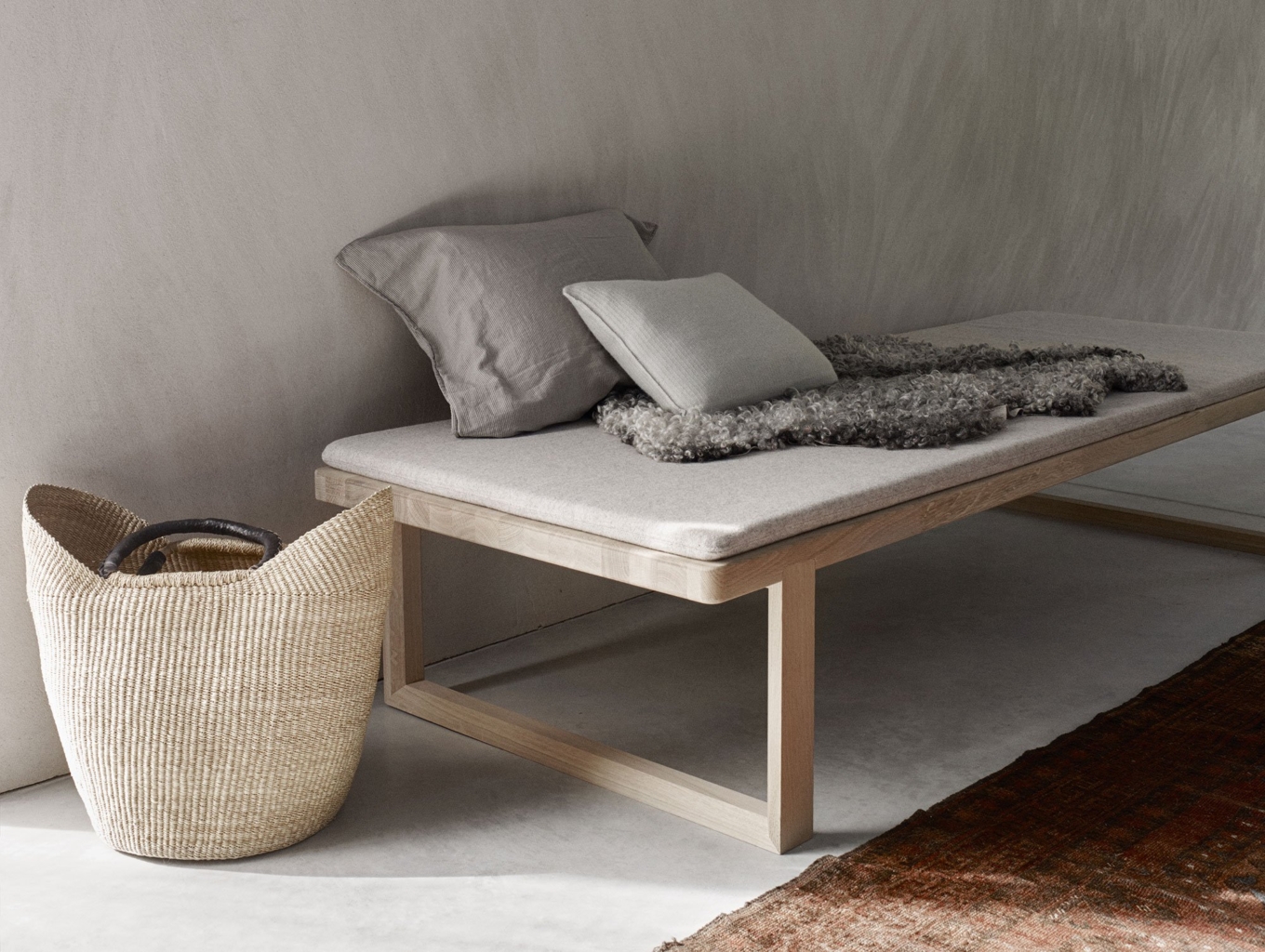
What are Scandinavian Colors?
While Scandinavian style interiors vary and may include different influences like industrial or boho, they usually feature a similar Nordic color palette. Scandinavian interiors and furniture designs feature white, off-white, and gray hues along with muted blue and green colors. Darker accents can also create bold color contrasts.
Other hues include beige and cream hues as well as muted brown colors, as these interiors generally feature an abundance of wood flooring and wood furniture.
Why is Scandinavian design so popular?
Scandinavian design combines clean lines and a minimalist aesthetic with traditional craftsmanship and multifunctional elements. This is a versatile style that offers plenty of room for self-expression but helps to create bright and airy interiors. Beautiful and simple, the Nordic style also suits modern living spaces that require functional and adaptable products that stand the test of time.
Thanks to the simple elegance of Scandinavian design, it’s easy to create a stylish and modern space. A few well-chosen items along with quality furniture and lighting can make all the difference. Plus, Scandinavian interior design elements complement a wide range of styles.
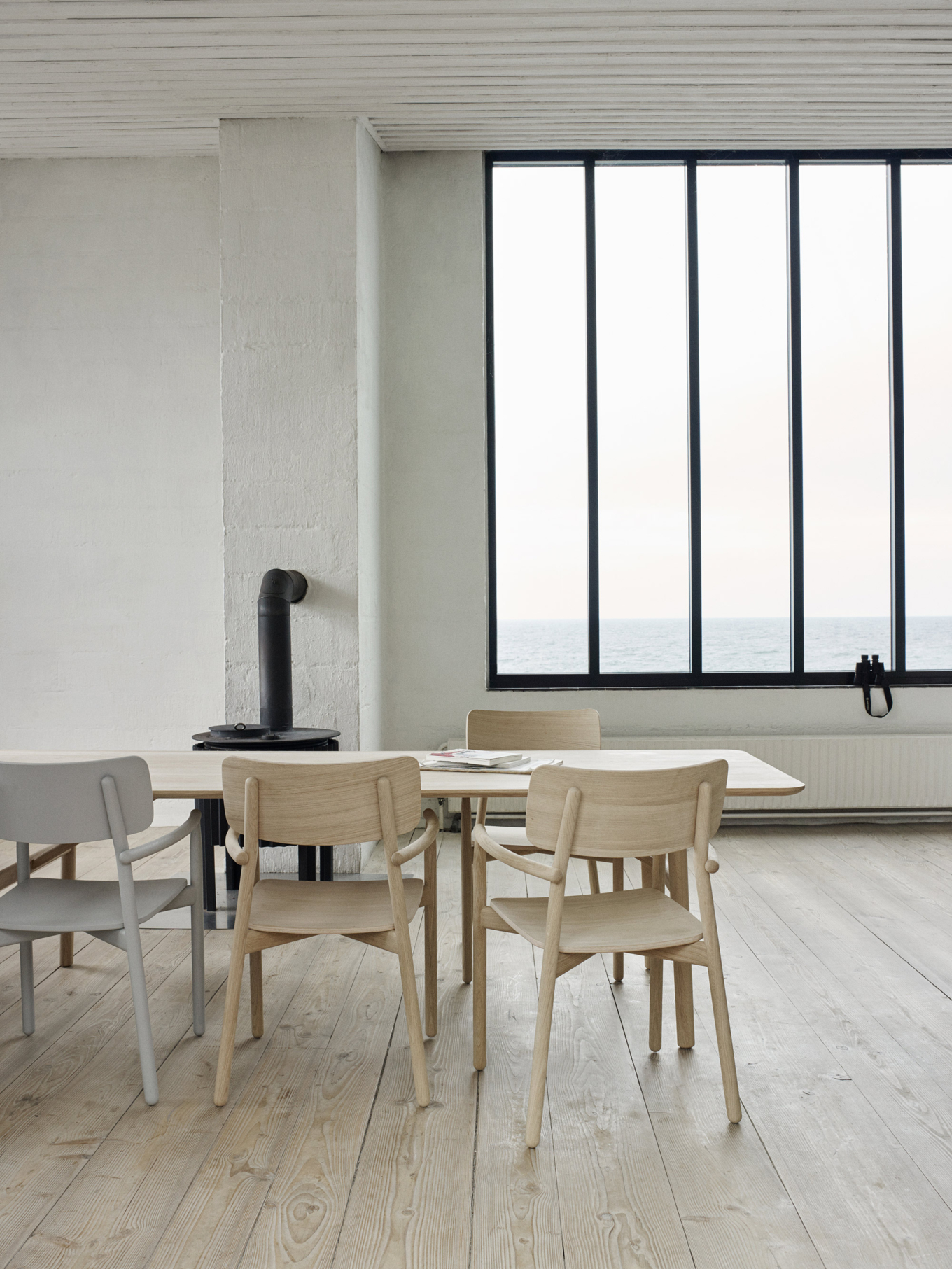
Scandinavian Interior Design
Scandinavian interior design focuses on function and on minimalist aesthetics. Simple and practical, Nordic style furniture and lighting blend into any spaces with ease and often adapt to different needs. Scandinavian home design also includes the use of materials like solid wood, natural textiles, and traditionally crafted items.
A neutral color palette that favors brighter hues, large windows that flood rooms with natural light, and carefully chosen decorative items like artworks or objects with traditional Nordic patterns are also part of Scandinavian interior design principles.
What is Scandinavian style furniture?
Scandinavian style furniture is minimalist and practical. Designers often use only solid wood to craft chair, tables, and other furniture items with a Nordic style. Natural materials like leather, linen, and Kvadrat textiles complement wood surfaces. Function plays a crucial part in all Scandinavian furniture design. Think cleverly hidden storage, modular shelving, or flexible designs.
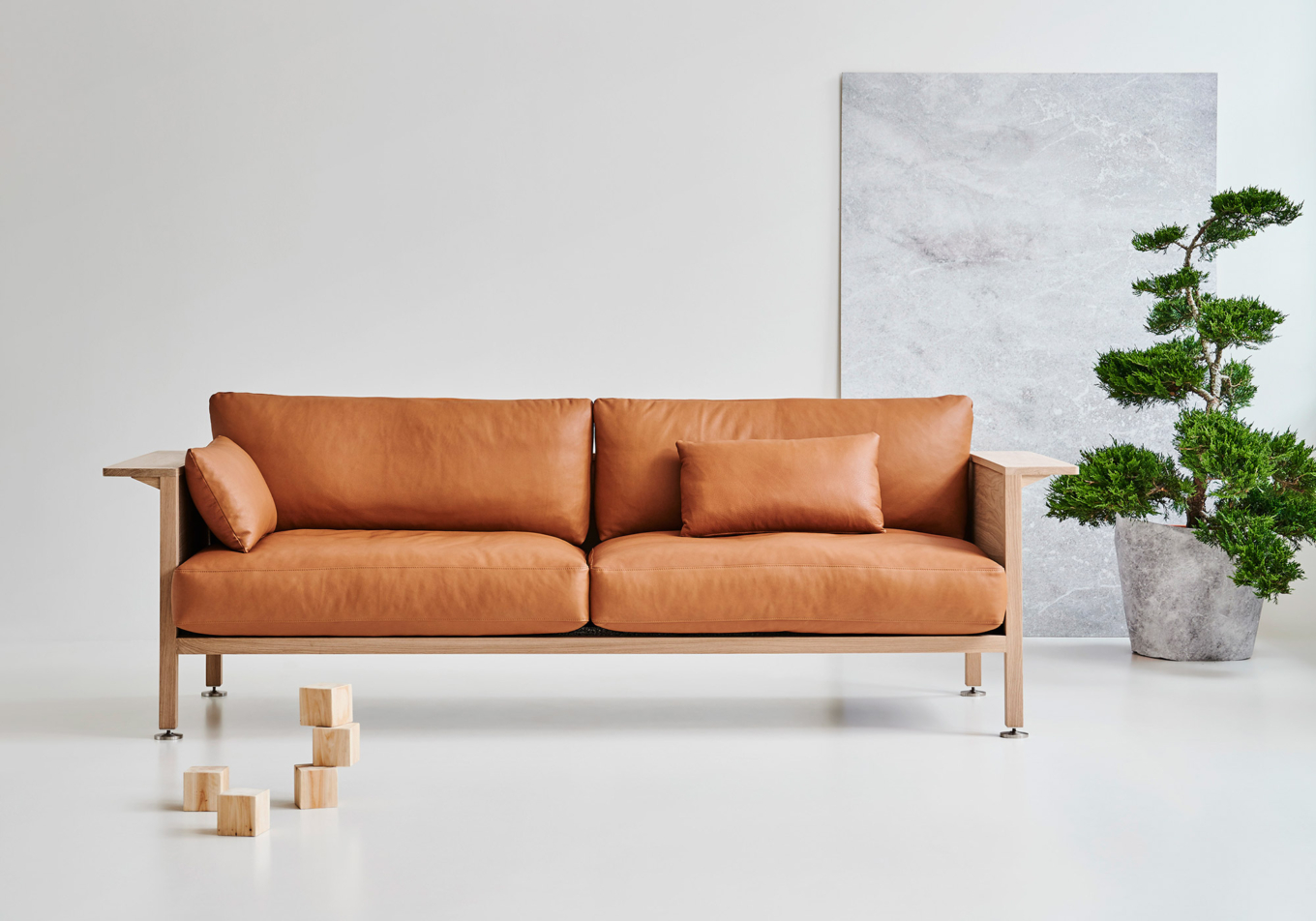
The Scandinavian style is not only about simplicity and function, however. Some of the world’s most iconic designs date back to the golden age of Scandinavian design. The sculptural Egg, Shell, and Panton chairs redefined the concept of furniture and influenced generations of furniture designers. These creatively designed chairs transformed into decorative pieces that easily established focal points in interiors. While designed decades ago, these iconic designs look as gorgeous and innovative today as they did back in the 1930s-1960s. Contemporary designers continue that legacy today with award-winning furniture designs that look as elegantly simple and imaginative as the creations that have preceded them.
What wood is used in Scandinavian furniture?
Scandinavian furniture features wood widely found in the five Nordic countries of Norway, Finland, Sweden, Denmark, and Iceland. The most common types of wood for Nordic style furniture are beech, ash, and pine. Lighter in color, these woods also feature a more subtle grain and minimal to no knots or dark markings.
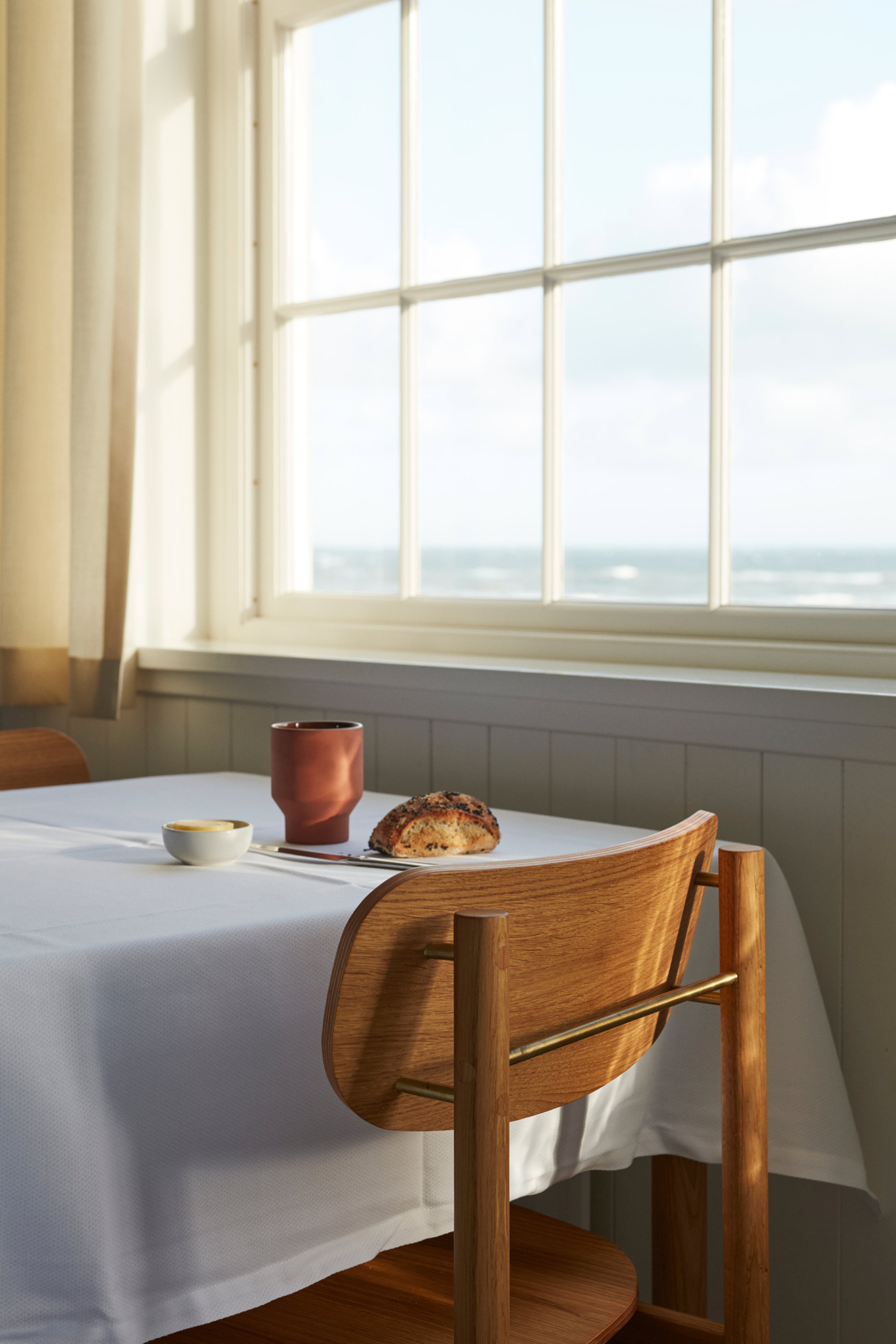
Scandinavian design living room
What is a Nordic inspired living room?
A Scandinavian living room typically features wooden flooring in a pale natural color and white walls. Large windows that flood the interior with natural light and a minimal use of simple designs help to create a bright and airy space. Darker accents, statement lighting, and designer furniture are also present in Nordic inspired living rooms.
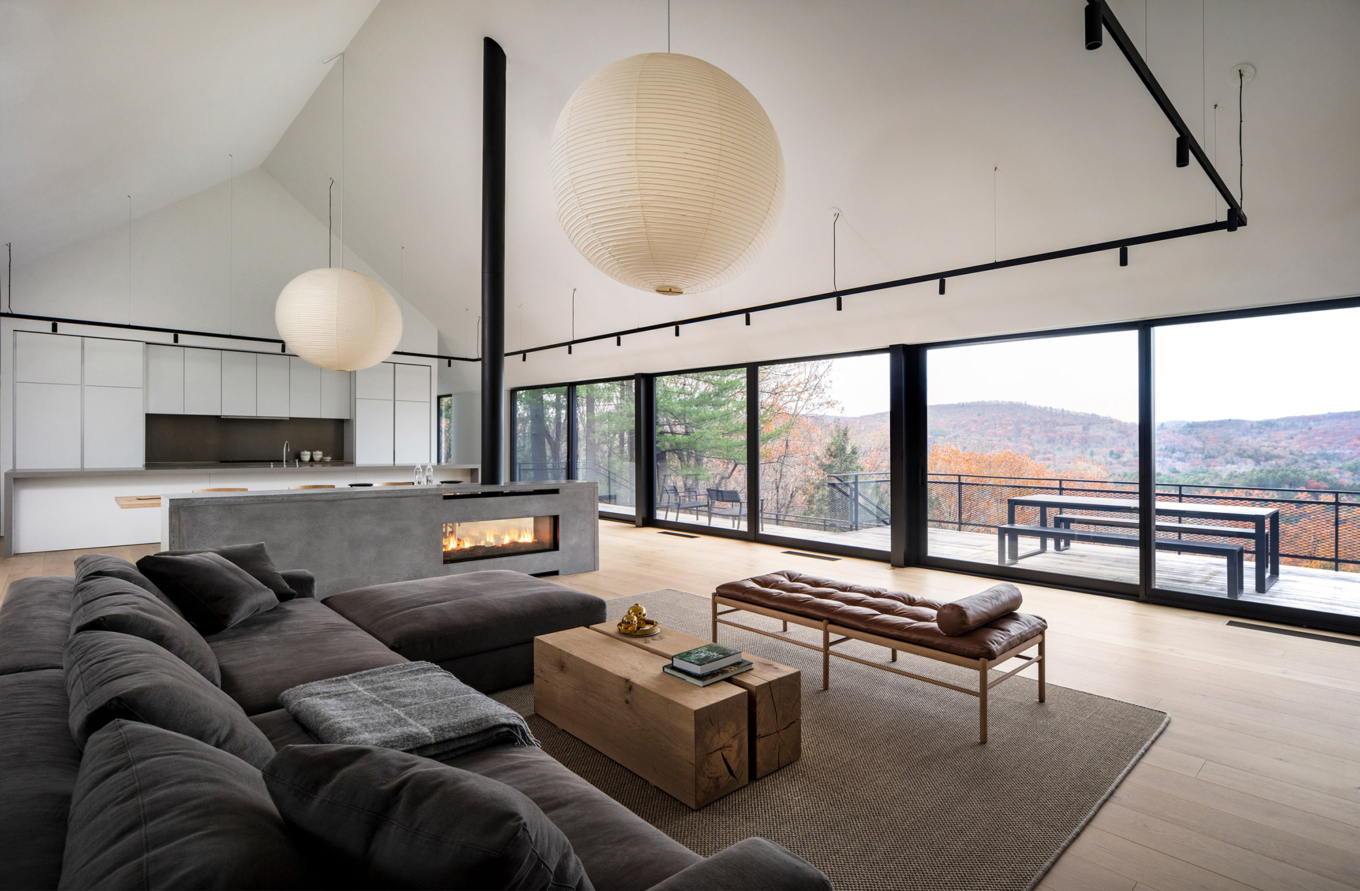
How do you create a Scandinavian living room?
Creating a Scandinavian style living room is actually easier than it may seem. A living room is also a great way to start transforming a dwelling with Nordic design, as it is the heart of the home. Here are some helpful ideas and steps to get you started:
- Clear the room of any clutter or unnecessary items.
- If possible, paint the walls white or a light neutral color.
- Likewise, install wooden flooring if you can or remove carpets from wooden floors.
- Add a plush, textured rug for that hygge feeling.
- Accessorize your existing furniture with natural textiles.
- Choose a statement pendant light to brighten up the space.
- Select a few simple wood items to decorate shelving.
- Add a few plant pots here and there.
- Remove any loud patterns, but don’t be afraid to use a bold artwork on a wall.
- Use muted blue accents that contrast lighter hues.
Scandinavian kitchen design
A Scandinavian kitchen is the epitome of simplicity and function. Like any Nordic design, kitchens completed in this style boast light hues, wooden surfaces, clean lines, and practical features. Sleek metal stools, dark cabinets, and tile patterns can also create a focal point, along with some well-chosen kitchenware and accessories.
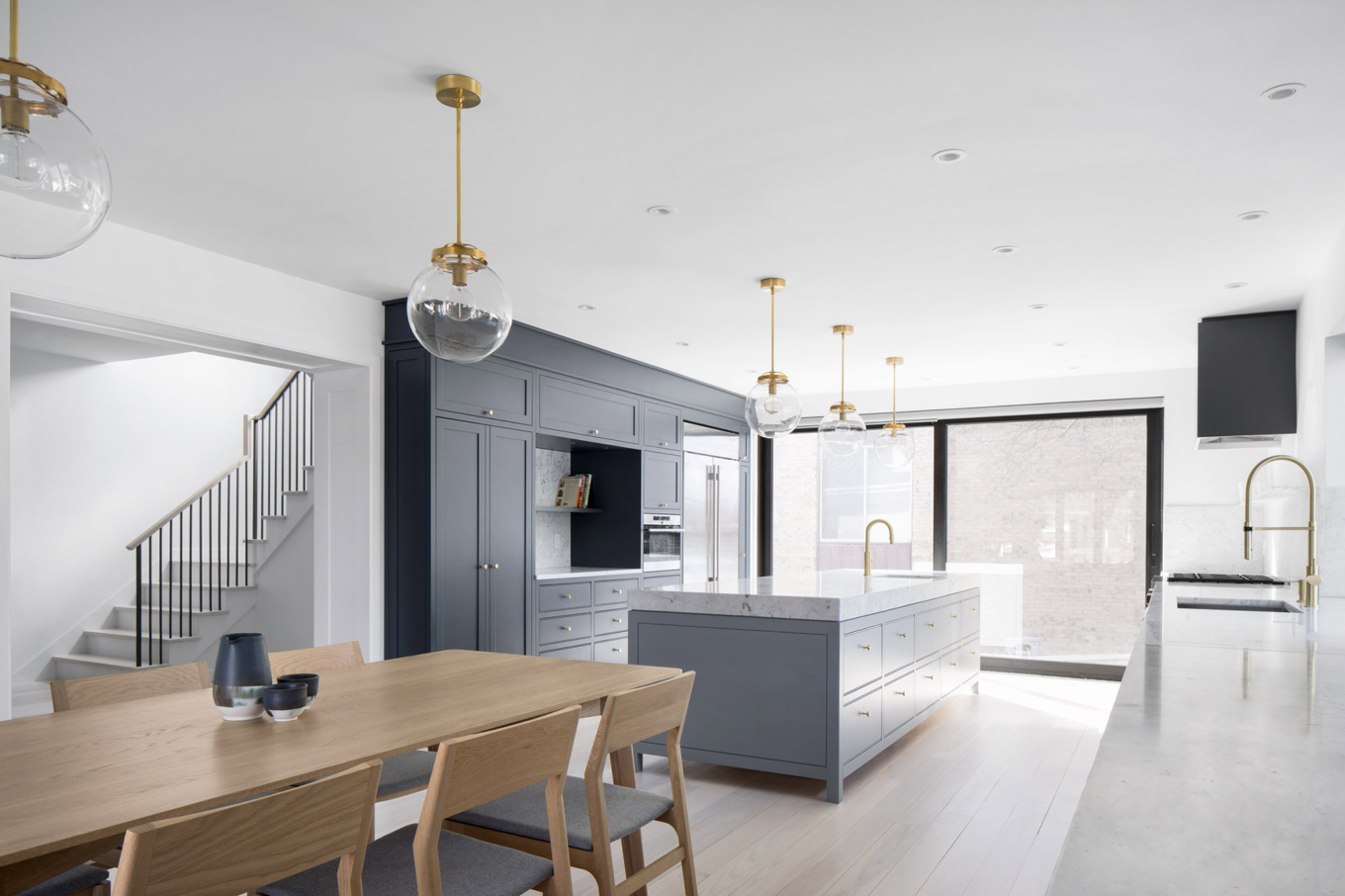
How do you create a Scandinavian kitchen?
If you want to create a Nordic style kitchen, you’ll need to follow a few easy steps. Thanks to the versatility of Scandinavian design, you can easily choose the look that best suits your preferences and your home’s decor.
- White or light neutral hues on the walls.
- Light cabinet colors for a brighter look.
- Darker cabinets to create a bold contrast.
- Wooden flooring – you can use laminate or high-quality, textured wood-style vinyl.
- Pendant lighting with a Nordic design.
- Clever storage solutions for glasses and kitchen tools.
- Creative accessories that are both beautiful and practical.
- Wall art or wall decor.
- A minimalist wall clock.
- A spacious wooden dining table with comfortable dining chairs.
Scandinavian bedroom design
The concept of hygge seems specially tailored for bedrooms. Naturally, a Scandinavian bedroom design features a range of elements that provide ultimate comfort. Natural textiles, warm throws, wooden flooring, and a plush rug can easily transform a bedroom into a hygge heaven. Decorative accents, wall art, plants, and natural light complete a Nordic style bedroom.
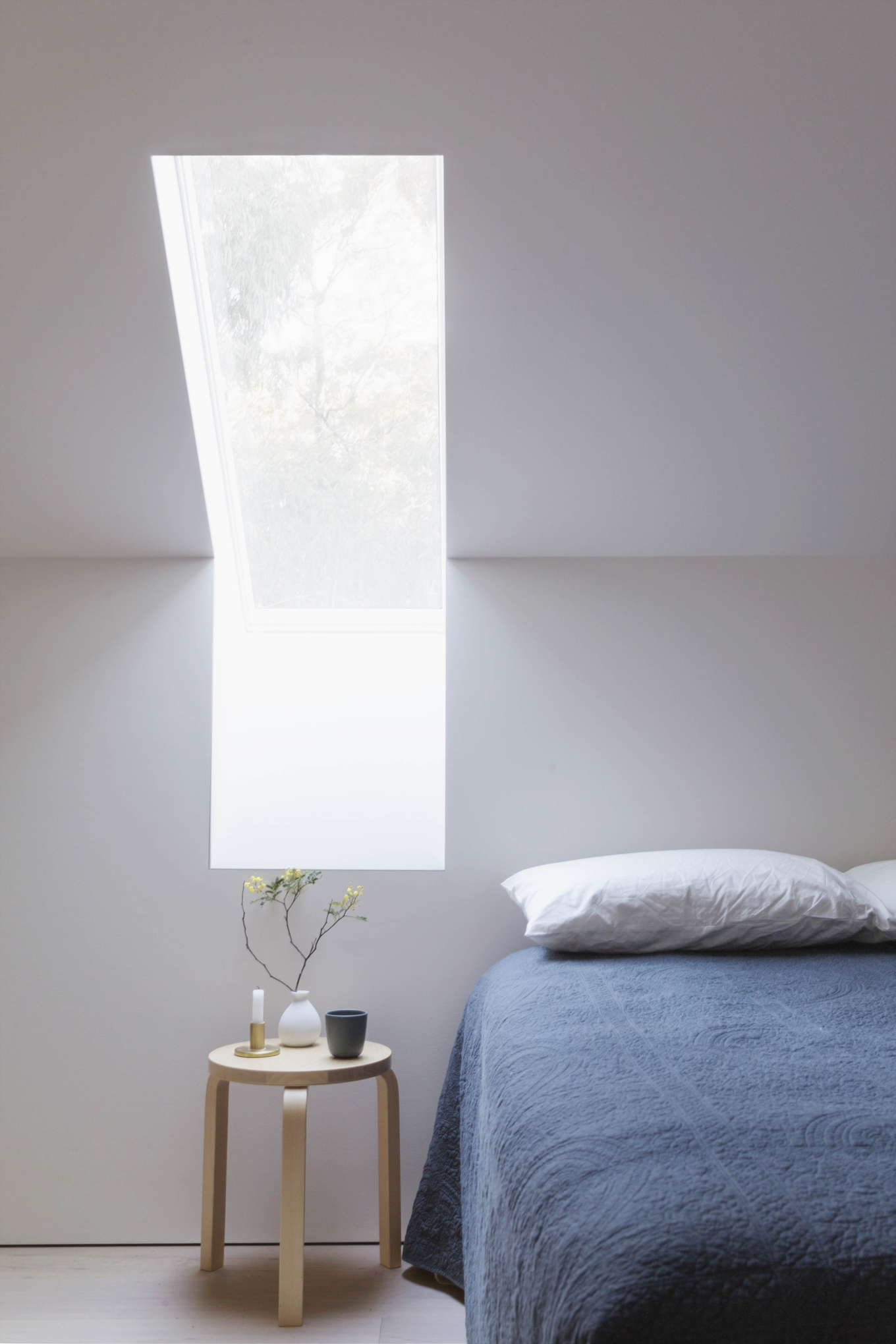
How do you create a Scandinavian bedroom?
Creating a haven of tranquility and comfort in your bedroom is easy if you follow some basic Scandinavian bedroom design tips.
- Transform your bed with a fluffy duvet, plush pillows, and natural textiles.
- Buy a quality wool throw with or without patterns.
- Choose a simple nightstand for a minimalist lamp.
- Install wooden flooring.
- Add a plush rug you’ll love to walk on first thing in the morning.
- Select items and materials with light, neutral colors.
- Get a minimalist Scandinavian design dresser.
- Choose a calming artwork to decorate a wall.
- Add a plant or two to bring a bit of nature to your retreat.
- Keep things simple and clear, but add some decorative accents.
Scandinavian bathroom design
Like Nordic style bedrooms and kitchens, a Scandinavian bathroom design focuses on simplicity and function. White walls and/or white tiles apear alongside wooden cabinets or light furnitue with wooden accents. Plant pots, open shelving systems, and minimalist wall sconces are also usually found in Scandinavian bathrooms.
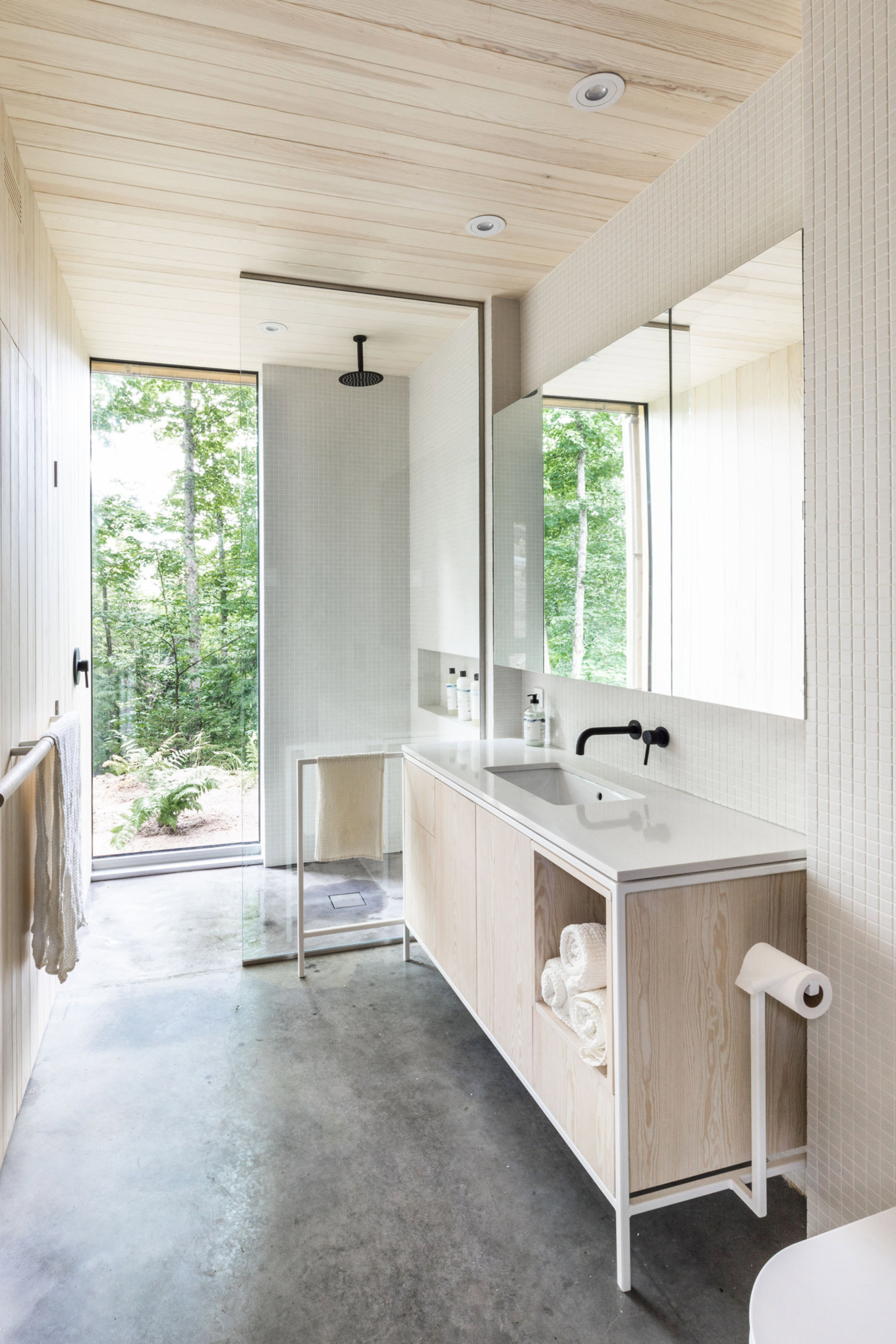
How do you create a Scandinavian bathroom?
To convert your bathroom to a Scandinavian style space, you need to use only a few classic elements of Nordic design.
- White walls and cabinets.
- Tiles on the walls or tile flooring.
- Wooden accents on cabinets.
- Open shelving that offers easy access to essential items.
- Plants.
- Plush towels.
- Minimalist lighting with or without metal accents.
- Furniture, faucets, and other items designed with clean lines.
- Practical storage solutions.
- A scented candle that brings Scandinavian landscapes into your bathroom.
Final Thoughts
Scandinavian design has influenced architects and interior designers for almost a century, well before the golden age of Nordic design of the 1950s. Blending a minimalist aesthetic with function and comfort, this style is still one of the most popular today. Versatile and timeless, Scandinavian furniture and lighting offer an easy way to create an elegant and cozy living space.
The epitome of simplicity and comfort, Scandinavian interiors embody the concept of hygge in all its glory. Plush surfaces, warm textiles, simple patterns, natural materials, and open-plan, airy spaces all contribute to enhance the feeling of comfort. At the same time, Nordic style living spaces look simply beautiful. Refined and cozy, Scandinavian design homes are also timeless and become the perfect setting for living well and slow living.


